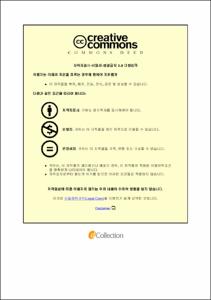시베리아 철갑상어(Acipenser baerii)와 러시아 철갑상어(A. gueldenstaedtii) 간 상반교배 잡종의 유도 및 초기 생물학적 특징 평가
- Abstract
- 시베리아 철갑상어 (Acipenser baerii)는 인공종묘생산시 초기 치어의 성장이 빠르고 생존율이 높다는 장점을 가지고 있으며 러시아 철갑상어 (A. gueldenstaedtii)는 외형적인 특성과 캐비아의 선호성으로 인해 시베리아 철갑상어에 비해 시장 선호도가 높다. 두 철갑상어 종은 현재, 우리나라에서 양식 후보종으로 고려되고 있다. 따라서 두 종의 장점을 보유한 종간 잡종 품종의 생산 가능성을 타진하기 위해서 두 종간에서 유도한 상반 교배 잡종(reciprocal hybrids) [유전자형 약어 : A. baerii parent (BB), A. baerii female x A. gueldenstaedtii male (BG), A. gueldenstaedtii female x A. baerii male (GB), A. gueldenstaedtii parent (GG)]을 대상으로 배 발생, 부화율 및 수정률 그리고 자어의 행동발달 등에 대해 조사 하였다.
본 연구에서 생산된 철갑상어 상반 잡종교배군의 수정률, 발생 배의 생존율 및 부화율은 잡종 유도 시 사용한 모계의 난질에 따라 결정되는 특징을 나타내었다. 수정률의 경우 4개의 유전자형 그룹간에 유의미한 차이가 없었으며, 배 생존율과 부화율은 모계종과 유사하였다. 초기 발생 및 부화율에서 양친어 간 (BB와 GG간) 유의적인 차이를 보였으나 BB와 BG간 유사하고, GG와 GB간 유사하다는 점에서 잡종화 유도 자체는 본 철갑상어 교배 그룹의 수정률 및 부화율에 유의미한 영향이 없다고 판단되었다. 난황자어의 형태분화 및 발달은 양친의 중간 형태를 보였으며, 주광성 반응에 있어 BG의 경우 BB와 유사한 양성의 주광성을, GB의 경우 GG와 유사하게 음성의 주광성을 보였다.
또한 잡종교배군의 유전학적 동정을 통한 잡종형성 여부를 확인하기 위해 SNP DNA marker를 이용하여 karyogamy 잡종 형성 여부를 확인하였고 미토콘드리아 DNA marker를 이용하여 모계 유전방식이 잘 이루어 졌음을 확인하였다.
부화 후 약 4 개월 (초기 평균 체형 : 38.5 ± 4.6 g)에서 6 주간 성장 실험 결과, GB가 가장 높은 평균 체중 증가를 보였으며 BG는 모계인 BB와 비슷한 평균 체중을 나타냈다. 전장의 경우 실험종료시점에서 GB, BB, BG 및 GG 순으로 길어 GB가 유어기 단계에서 양 친어에 비해 우수한 체중 증가를 나타냄을 확인하였다.
Siberian sturgeon (Acipenser baerii) exhibits fast growth and high survival rates during early life stages under artificial seedling production conditions. On the other hand, Russian sturgeon (A. gueldenstaedtii) represents higher market preference compared to Siberian sturgeon, which is mainly attributed by more valued caviar and external morphology. However, practical conditions for artificial seedling production of Russian sturgeon have been less established as relative to those of Siberian sturgeon, particularly in Korean aquaculture domain. In this study, artificial hybridization between two species was carried out in a reciprocal manner [genotype abbreviations: A. baerii parent (BB), A. baerii female x A gueldenstaedtii male (BG), A gueldenstaedtii female x A. baerii male (GB), and A. gueldenstaedtii parent (GG)], and examined the effects of hybridization on the embryonic development, hatchability and larval performances. Fertilization rates were not significantly affected by reciprocal hybridization itself, while embryonic viability and hatchability of hybrid genotypes were similar with those of maternal species. Prolarvae of four genotypes showed a similar degree of early survival rate, although patterns of ontogenic development and pigment plug evacuation were genotype-dependent. Genotypes BB and BG showed more active swimming behavior than did GB and GG. Phototactic responses of BG and GB hybrids were more similar with their maternal parents BB and GG, respectively. Reciprocal hybrid genotypes could be successfully identified by using PCR typing of both nuclear and mitochondrial DNA markers. After six-week growth trial from age of about 4 months after hatching (initial average body: 38.5±4.6 g), hybrid group GB showed the highest average body weight gain, while the group GG revealed the lowest score. Hybrid group BG displayed the average body weight similar with that of Siberian sturgeon group BB. For the pattern of total length growth from the same growth trial, total length was the longest in GB and this highest score was followed by BB, BG and GG. Taken together, the hybrid genotype GB is capable of exhibiting the potential of hybrid vigor, in terms of significantly superior body weight gain to its parental genotypes during early life stages. On the other hand, its reciprocal counterpart BG represents the early growth performance similar with its maternal parent genotype (BB).
- Issued Date
- 2018
- Awarded Date
- 2018.2
- Type
- Dissertation
- Publisher
- 부경대학교
- Affiliation
- 부경대학교 대학원
- Department
- 대학원 수산생물학과
- Advisor
- 남윤권
- Table Of Contents
- Ⅰ. 서 론 1
Ⅱ. 재료 및 방법 5
1. 친어 선발 및 잡종 그룹 유도 5
가. 성숙친어 선발 5
나. 호르몬에 의한 인공산란 유도 및 인공수정 5
다. 상반 교배 잡종 실험군의 유도 6
2. 수정률, 배 발생 및 부화율 평가 7
가. 수정률, 발생 배의 생존율 및 부화율 평가 7
나. 발생 관찰 및 기록 8
3. 초기 난황 자어의 발달 8
가. 난황 자어의 생존 및 성장 조사 10
나. 형태 분화 조사 10
다. 주광성 특성 조사 11
4. 유전학적 동정 12
가. 미토콘드리아 DNA를 이용한 유전자 마커 조건 12
나. 핵 DNA를 이용한 유전자 마커 조건 13
5. 잡종 치어의 골격 분석 14
6. 초기 생존율 및 성장 조사 16
가. 유어기 생존율 및 성장 평가 16
Ⅲ. 결과 18
1. 잡종 교배군의 수정률, 배 발생률 및 부화율 18
2. 잡종 교배군의 초기 자어(prolarvae) 발달 특징 21
가. 난황 자어의 성장 21
나. 자어의 형태학적 특징 21
다. 주광성 특징 28
3. 잡종의 유전학적 동정 31
가. 핵 DNA 마커를 이용한 잡종 유전형 검증 31
나. 미토콘드리아 DNA 마커를 이용한 모계유전의 검증 31
4. 잡종 치어의 형태학적 특징 34
가. 외관상 특징 34
나. 골격 형질의 특징 34
6. 유어기의 잡종 교배군의 생존 및 초기 성장 36
Ⅳ. 고찰 45
국문요약 54
감사의 글 56
참고문헌 58
- Degree
- Master
- Files in This Item:
-
-
Download
 시베리아 철갑상어(Acipenser baerii)와 러시아 철갑상어(A. gueldenstaedtii) 간 상반교배 잡종의 유도 및 초기 생물학적 특징 평가.pdf
기타 데이터 / 1.15 MB / Adobe PDF
시베리아 철갑상어(Acipenser baerii)와 러시아 철갑상어(A. gueldenstaedtii) 간 상반교배 잡종의 유도 및 초기 생물학적 특징 평가.pdf
기타 데이터 / 1.15 MB / Adobe PDF
-
Items in Repository are protected by copyright, with all rights reserved, unless otherwise indicated.